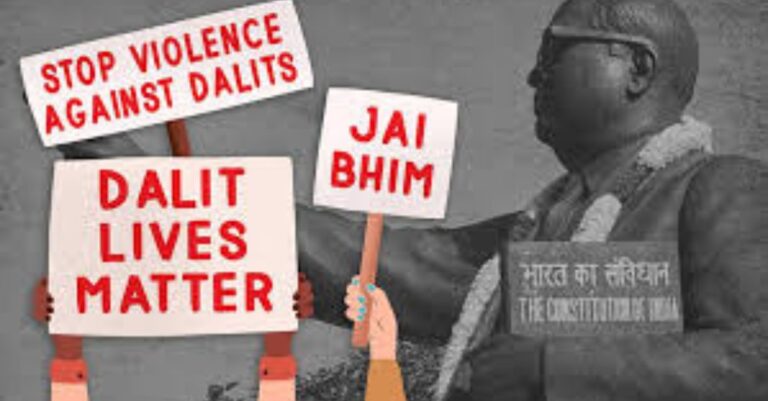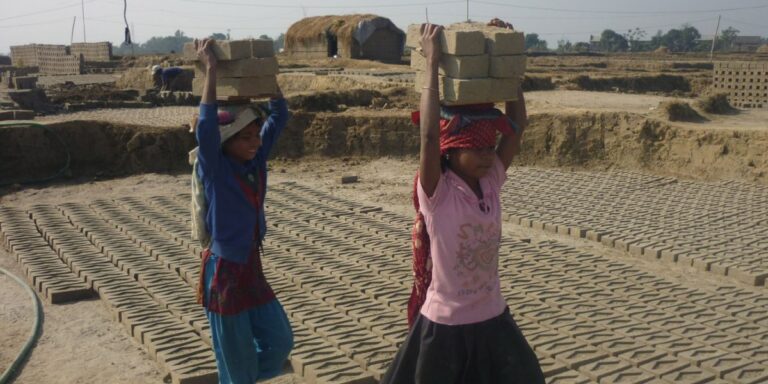Dr O Prasada Rao, a retired scientist from the Council of Scientific and Industrial Research, has argued for establishing Ram Rajya in his 30 January article, “Towards Ram Rajya,” published in The Statesman. He has found the following data that act as obstacles towards this dream. He has meticulously presented today’s realities from multiple fronts. If these hindrances are overcome, Ram Rajya will automatically take place. The piece has no words like democracy, republic, rights, or freedom. It has highlighted ideals like morality, honesty, righteousness, and duty. It tactfully avoids even the mere mention of our constitution and constitutional rights.
The problems he has raised are presented below:
India’s Global Hunger Index
About 25 per cent of the population in India are poor (NITI Aayog). India’s Global Hunger Index is 28.7 and ranks 111th out of 125 countries, which is a serious issue. Also, 215 million Indians are undernourished (World Bank). Over 71 per cent of Indians cannot afford a healthy diet with enough fruits, vegetables, legumes, nuts, and whole grains. More than 1.7 million Indians die every year due to diseases that can be attributed to dietary risk factors and weight levels (Centre for Science and Environment). One hundred ninety million people go to bed hungry daily. About 32.1, 35.5 and 19.3 per cent of children under the age of five years in India are underweight, stunted and wasted, respectively (National Family Health Survey). Over 100 million Indians were diagnosed with hypertension in 2023, which is expected to rise to over 124 million by 2045 (ICMR).
Deaths and Diseases
A quarter of Indians are at risk of dying from non-communicable diseases such as heart and lung diseases, stroke, cancer, and diabetes. Over 220 million people in India have hypertension (Frontiers in Public Health). India accounts for a significant proportion of global suicides, occupying the 41st rank with 1,53,052 suicides in 2020. Suicides have been rising over the past five decades in the country; financial problems and dowry issues are among the key reasons.
The Legatum Prosperity Index
The Legatum Prosperity Index is a tool that measures the prosperity of nations across the world. It ranks countries based on different variables, including health, education, personal freedoms, safety and security, and the business environment. India ranks 116th out of 167 countries with a score of 53.5, indicating low prosperity. The Happiness Index measures the level of happiness in a country, calculated based on factors like economic prosperity, life expectancy, generosity, and corruption. According to the World Happiness Report 2022, India ranked 136th out of 146 countries with a happiness index 4.324. The highest was for Finland, with 7.8, and the lowest was 1.86 for Afghanistan. India’s ranking was lower than the neighbouring countries ~ Bangladesh, China and Nepal.
The Global Justice Index
The Global Justice Index (GJI) is a tool that measures countries’ adherence to the rule of law, human rights, access to justice, and other related factors. According to the GJI report, India ranks 69 on this index. Justice is inordinately delayed in India, with 4.7 crore cases pending at different levels of the judiciary as of May 2022. About 1.82 lakh cases have been pending for over 30 years; the cases on anti-Sikh riots after the murder of former Prime Minister Indira Gandhi and the Bhopal Gas Tragedy, both occurring in 1984, are still unresolved, and the victims have yet to receive justice and compensation.
Morbid symptoms similarly gripped Indian democracy. It hosted fourteen of the world’s most polluted cities. There were more poor people in eight Indian states than in the twenty-six countries of sub-Saharan Africa. India’s public hospitals were often death traps. Violence was everywhere: knives, guns, and bombs, wielded by cavalcades of men in cars and on bikes, were often weapons of choice in political turf wars. Studies ranked India as the most dangerous country for women. A high court judge estimated it would take the Indian judiciary 320 years to clear the backlog of more than 32 million cases (John Keane, The New Despotism).
Economic Crimes and Frauds
Economic crimes and frauds continue to be a significant challenge for Indian companies, with 66 per cent subjected to them. About 99 per cent of frauds have been on platforms such as financial, social media, goods, services, enterprises, etc. India has witnessed several scams, such as the Commonwealth Games, stamp paper, coal, and 2G. Several bank frauds were committed by prominent businessmen and industrialists; some have run away to foreign countries to escape punishment.
In addition, online frauds such as loan apps, KYC expiry, and e-commerce continue to occur. Different kinds of cheating and deceiving of people happen regularly on a large scale. Violence against women in India is a serious issue that has been prevalent for many years. Nearly 1 in 3 Indian women aged between 18-49 have suffered some form of spousal abuse, and around 6 per cent have suffered sexual violence (National Family Health Survey-5). The reported rate of rapes in India is 1.9 incidents per one lakh people (World Population Review), and in 2016, India’s National Crime Records Bureau reported 38,947 rapes and 3,38,954 crimes against women.
India has an ‘undisciplined democracy’ because people, particularly the politicians, grossly misuse the fundamental right of ‘Freedom of speech’ by indulging in unparliamentary accusations and criticisms and misuse of national agencies by governments for political gains. Religions and politics are being mixed. People think laws are made to be broken.
The Corruption Perception Index
The Corruption Perceptions Index (CPI) ranks countries by their perceived levels of public sector corruption. The CPI score ranges from 0 (highly corrupt) to 100 (very clean). India ranked 86th out of 180 countries with a score of 40 (Transparency International). Society is greedy. As Mahatma Gandhi said, “Earth provides enough to satisfy every man’s needs, but not every man’s greed”. People read or listen to the Ramayana, Mahabharata, Bhagvad Gita etc, and visit temples, but lack characteristics of dharma, compassion and human values. Lord Rama is revered as “Maryada Purushottam” for the completeness of his character, embodying the highest ideals of morality, duty and righteousness and for upholding the values of truth, justice and compassion. How many leaders do we have with such characteristics? We are living in the age of “Kaliyuga”, the fourth and the worst of the four yugas and the final one.
The features typical to Kaliyuga, according to the Shastras, are the prevalence of materialism and empirical thinking, Famine, disease, overpopulation, extreme animosity among people, cheating, and poverty, and it is characterised by moral and spiritual decline, chaos and suffering.
There is a significant amount of poverty, hunger, disease, unhappiness, lack of peace and justice, law and order concerns, communal disharmony and caste and gender-based division in India. It is essential to establish ‘Rama Rajya’ in the country to set things right. But large-scale dishonesty, corruption among people, economic crimes and frauds committed by them and lack of ethical characteristics in society make it difficult to do so. A sea change is required in the mindset of people to establish Rama Rajya in the country.
So far, he is good at presenting a reality check on creating a Ram Rajya.
Against Democracy
Prasada’s view, we may take, is not against quashing the Indian Constitution to establish Ram Rajya. His beginning tone, “After fulfilling the long-cherished construction of Lord Rama Temple at Ayodhya, the next desire of people is for establishing “Rama Rajya” in the country. “Rama Rajya” is a term used to describe the ideal state of society as envisioned by Lord Rama, comprising perfect harmony, justice, dharma and prosperity, where people live in peace and happiness.” is destructive to the constitutional ethics of India.
He is speaking about Bapu and Ram Rajya to be established on “equal rights of the prince of a pauper.” Is it feasible? People know that big corporate houses are looting the resources of the country with the support of the ruling party. People know the level of corruption in Indian public life. People know the ugly realities of Indian life.
Crushing Constitutional Ethics
Doses of religious blessings cannot eradicate the colossal problems the Indian masses face, from education, health, and job issues daily. Under this horrible condition, which is killing the basic tenets of Indian democracy and the Republic, the scientist is preaching like a religious messiah from the ramparts of the newly built Hindu shrine. He has willingly forgotten that it is a democracy where people elect the leaders by voting. It is not a monarchy inherited from divinity. People can throw the leaders away, however invincible they may be. He seems to teach us the values of harmony, justice, dharma, etc. Mark him; he is not speaking about people’s rights and freedom. He is not talking about the Indian Republic or the Indian Constitution.
India has been a killing field for the Indian Muslim minority. Their identity, their way of life, their food and sartorial habits are being questioned. They are openly threatened with dire consequences by the Hindutva mobs. They are being lynched in the name of this and that. The scientist is influencing the ruling party to establish Ram Rajya by arguing against constitutional ethics that hold that India is a Sovereign, Socialist, Secular Democratic Republic.
India has been a Hindu Rashtra. It may turn into a Ram Rajya soon. But a scientist, bypassing the basic democratic imperatives of India, is singing for Ram Rajya. It is shocking but not unexpected when almost all Indian institutes have been polluted with the ideological bias of RSS. They talk about harmony, but it is Hindu harmony. They talk about peace while doing everthing that leads to violence in society. Yes, the death of democracy will lead us to Ram Rajya where Muslims, Dalits, and the poor shudras will have no rights. They will have to live like slaves, if they don’t want to be jailed or killed.
References
- https://www.thestatesman.com/opinion/towards-ram-rajya-1503264634.html, accessed 1st Feb 2024.
- John Keane, “Dark Times, Again,” The New Despotism, Harvard University Press, 2020, Kindle Edition.




